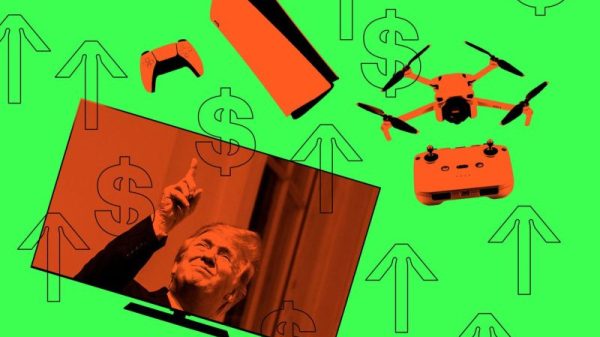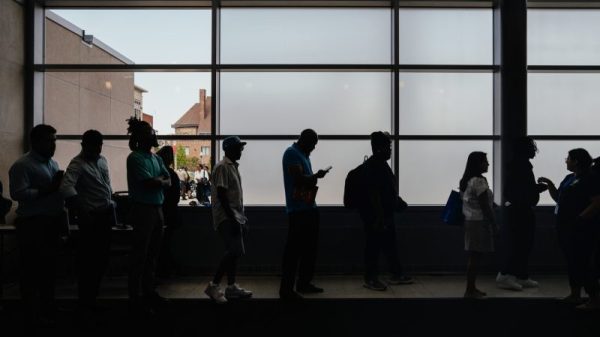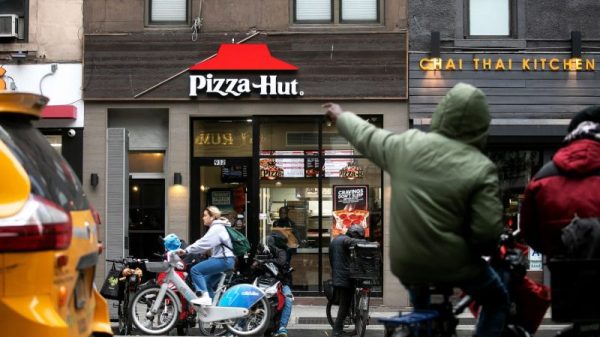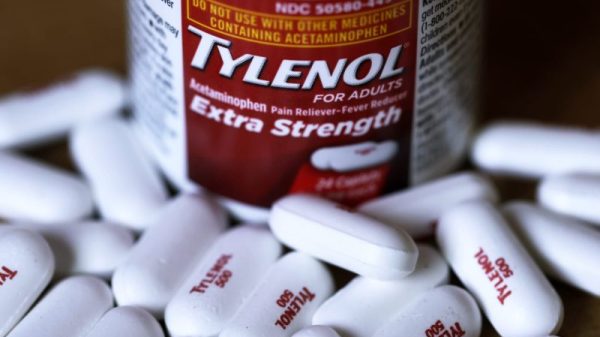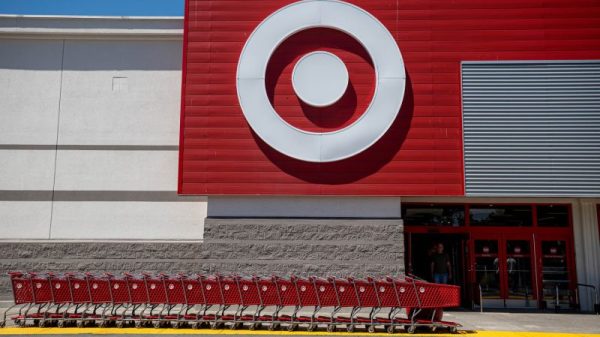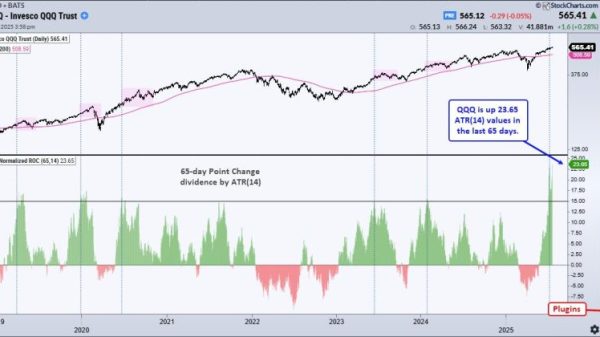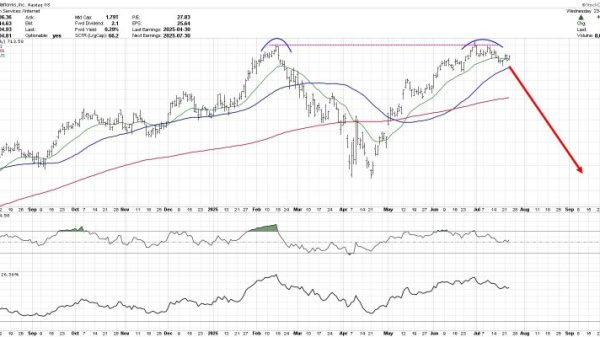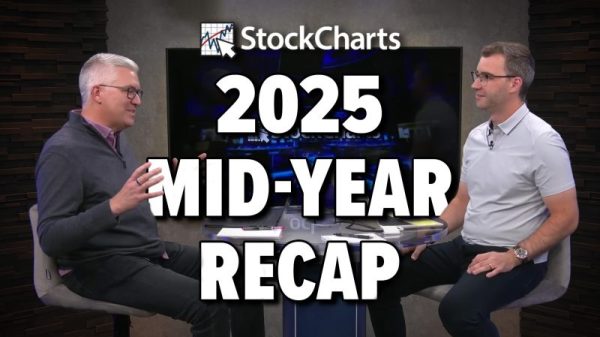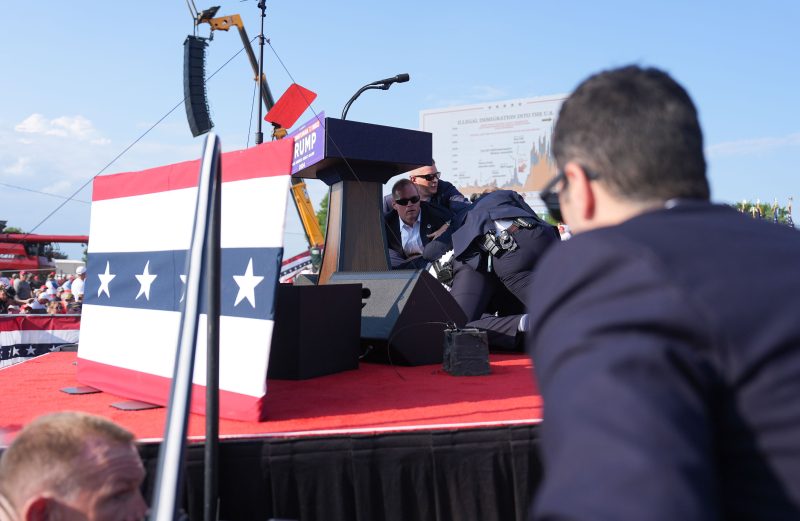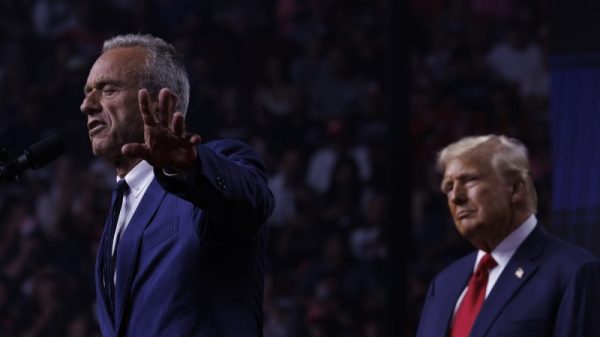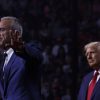A Secret Service investigation has confirmed security breakdowns that paved the way for an attempted assassination of Donald Trump, while also revealing new information — including that agents never directed local police to secure the roof of the building used by the gunman, according to two senior government officials familiar with the probe.
The officials, speaking on the condition of anonymity to describe an internal probe, said the investigation found that agents from Secret Service headquarters and the Pittsburgh field office had an alarmingly slipshod strategy to block a potential shooter from having a clear sight of the Republican nominee for president at the July 13 rally in Butler, Pa.
Agents securing the event had discussed possibly using heavy equipment and flags to create a visual impediment between the Agr International building and the rally stage, the officials said. But supervisors who arrived at Butler the day of the rally found cranes, trucks and flags were not deployed in a way that blocked the line of sight from that roof.
Thomas Matthew Crooks was able to climb atop the building and open fire on Trump, wounding his ear, critically injuring two other people and killing one spectator before being fatally shot by a Secret Service sniper.
The internal probe, known as a Mission Assurance investigation, is typically used to improve security practices.
The Butler investigation found significant weaknesses in the Secret Service’s standard communication system for events where political candidates appear. Unlike for appearances by the president or vice president, the Secret Service uses a command post separate from local police assigned to the event.
In Butler, the investigation found that:
A Secret Service radio room where agents were supposed to monitor potential threats and get reports of any problems had no way to receive real-time alerts from local police surveilling the crowd and outer perimeter.
Local police’s alert of a suspicious man at the rally before Trump’s arrival was not broadcast widely on Secret Service radio. Instead, local counter snipers were instructed to text a photo of the man — who was behaving oddly near the Agr building and carrying a range finder — to just one Secret Service official, limiting the agency’s awareness of a man who turned out to be the gunman.
Secret Service agents never heard local police radio traffic about trying to track down and then spotting that man after Trump began speaking.
The report also found the protective operations office of the Secret Service was slow to beef up security for Trump as he began campaigning, even after the agency obtained intelligence indicating that there was an Iranian state plot to kill or harm political candidates.
Secret Service acting director Ron Rowe testified to Congress at the end of July that he was embarrassed by the security lapses he had learned about in Butler and pledged the internal review would help strengthen the agency’s mission going forward.
The findings of that review may be released to the public next week, the government officials said. Rowe shared a summary in private briefings with the Senate Homeland Security Committee and a House investigative task force Thursday and said he has ordered a number of changes in security plans to address these gaps, one of the officials said.
For example, the agency now co-locates Secret Service agents and local police in the same command center for public appearances of the presidential candidates, the official said.
“I think the American people are going to be shocked, astonished, and appalled by what we will report to them about the failures by the Secret Service in this assassination attempt on the former president,” Sen. Richard Blumenthal (D-Conn.), a member of the Senate Homeland Security and Governmental Affairs Committee, told Fox News after Thursday’s briefing.
The investigation corroborates several earlier reports from The Washington Post and other news organizations. The Post reported that police in Butler County warned the Secret Service in the hours before the rally that they would not be able to post a patrol car next to the Agr building, but Secret Service agents gave them no other instructions to secure the building. The Post also reported that the separation of the Secret Service radio room and local police command post meant local police concerns about Crooks were not widely shared.
Ahead of the public release of the report’s findings, several senior Secret Service agents are announcing their retirements. Mike Plati, assistant director of the Office of Protective Operations, resigned effective Friday, the Secret Service confirmed in a statement.
Also imminently retiring is John Buckley, a senior executive who helps oversee the office that decides what assets to devote to secure public events, according to an email sent to Secret Service staff Friday and reviewed by The Post. A senior agent in the Pittsburgh field office, which crafted the security plan, also has indicated his plans to retire, one of the officials familiar with the investigation said.
Kimberly Cheatle, a veteran agent, resigned as director of the agency days after the shooting amid bipartisan calls for her to step down. She had faced criticism for not providing details about the investigation in the immediate aftermath of the attack and for saying she wanted to wait until the 60-day review was completed.
In response to questions about the report, Rowe said in a statement that he has begun an agency-wide review to harden the protective bubble around the more than 40 government officials and family members the Secret Service protects. He warned that beefing up this security will cost money.
“The Secret Service cannot operate under the paradox of ‘zero fail mission’ while also making our special agents and uniformed division officers execute a very critical national security mission by doing more with less,” Rowe said.
Though the Secret Service took responsibility for the security failures soon after the Trump rally shooting, the aftermath was filled with bitter recriminations and confusion over whether the service or local law enforcement was responsible for allowing Crooks to access the roof just 150 yards from where Trump was speaking. The failures have drawn bipartisan condemnation from lawmakers investigating the matter.
The attack revealed years of conflicts between the former president and the Secret Service over the level of his protection. Trump’s aides have said the Secret Service rebuffed their efforts over the past several years to enhance his security but significantly expanded his protection and equipment after the assassination attempt, with far more snipers agents and closures around him.
Aides to Trump said last month that they had sometimes canceled or postponed events over concerns that security was insufficient.
Days before the Butler rally, the FBI arrested a Pakistani national for allegedly taking part in a plot on behalf of Iran to kill a politician or government official on U.S. soil, raising worries about Trump’s safety.
Trump and his team were told there was a security issue, but not that it was related to Iran, said a person familiar with the situation who also spoke on the condition of anonymity to discuss information that has not been made public. Because of the threat, the campaign believed there was more security at the Butler rally and an event a few days earlier in Doral, Fla.
The FBI is leading the investigation into the July 13 shooting, but several other inquiries are pending, including in Congress and the Department of Homeland Security Office of Inspector General. A report is also due in early October by an independent panel commissioned by the DHS to examine the attack.
Josh Dawsey and Maria Sacchetti contributed to this report.


